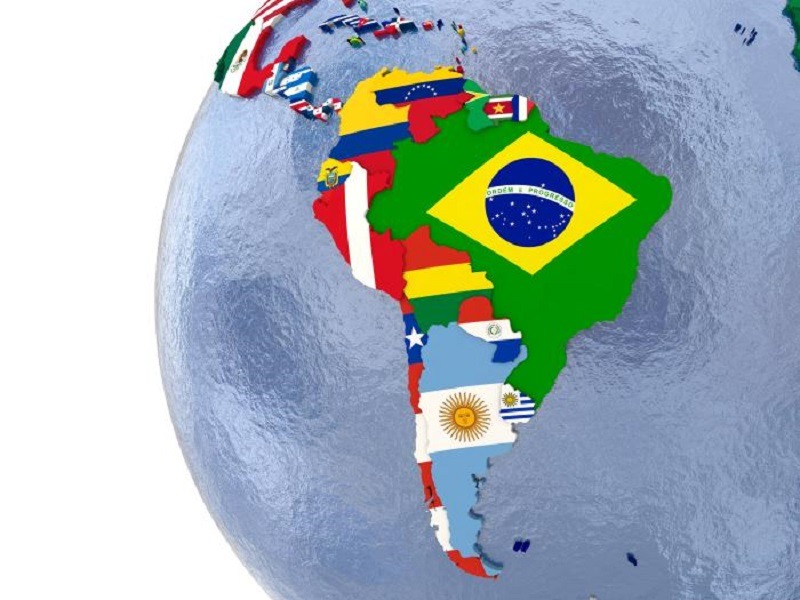Andrew Korybko
South America is in the throes of revolutionary fervor, both its genuine people-driven and weaponized Color Revolution forms, and the question on everyone's mind is whether it'll eventually spread to Brazil and pose a threat to Bolsonaro. Venezuela has been successful in withstanding the US' incessant Hybrid War for the past few years already, but Washington's weaponization of mass protests for regime change purposes inadvertently led to the proliferation of this political technology all throughout the continent and its use by forces that are inimical to the US' interests. The first example of this in practice occurred on the last day of September when protesters streamed into the streets to support Peruvian President Vizcarra against the pro-US congress' temporary putsch against him, which quickly led to his reinstatement in office since the military and police had already declared that they still recognized him as their country's legitimate leader.
This event was overshadowed by the much more violent protests that broke out in neighboring Ecuador just a few days thereafter following President Moreno's cancellation of fuel subsidies as part of the deal that he had earlier reached with the IMF. The population was so incensed that the government had to relocate to the port city of Guayaquil while it attempted to negotiate with the protesters. The eventual outcome was that the state agreed to rescind its controversial order, though some observers believe that another round of unrest is guaranteed since the structural issues underlying the recent crisis haven't been addressed whatsoever. They are, however, being tackled head-on in nearby Chile where the citizens of that country are still protesting several weeks after they first decided to take direct action in response to the government's metro fare increase, which was the proverbial straw that broke the camel's back and provoked the latest unrest.
What's so special about Chile is that it's one of the most developed countries in the world, at least according to macroeconomic standards, though it's also the one with the greatest socio-economic disparity among its OECD peers. The protesters want to rectify the structural wrongs that have been imposed upon the population through the continuation of Pinochet's Old Cold War-era constitution into the present day, hence why their movement is still going strong and has since evolved to the point of outright demanding a new people's-drafted constitution that removes the inequalities that are institutionalized into the current one. In the midst of this ongoing revolution, neighboring Argentina removed its hyper-neoliberal incumbent in the latest elections and returned former President Cristina Fernandez Kirchner to power as their Vice President following her running mate's successful campaign at the end of October.
Thus far, all of the developments that were described in this analysis (except for Venezuela's) have been detrimental to the US' grand strategic interests because they represent a rebirth of the "Pink Tide" sentiment from the 2000s that's pushing back against Trump's "Fortress America" vision of restoring his country's historic hegemony over the continent. Peru's inclusion in this categorization is somewhat debatable since the country is still an American ally, though it's also a very close trading partner of China's too and is therefore always susceptible to being victimized by US-backed destabilization plots in order to pressure its government to gradually reduce its ties with the People's Republic. In any case, there's no doubt that the US is against the latest turn of events in Ecuador, Chile, and Argentina, all three of which it had taken for granted as its regional proxies, which explains why it worked so hard to subvert the democratic process in Bolivia recently.
That lithium-rich landlocked socialist state just fell victim to a Hybrid War regime change operation that risks embroiling the country in a more intense civil war than it already unofficially is in. Considering the possibility that any worsening of the crisis there could lead to similarly disastrous socio-economic consequences as the years-long one in Venezuela, it can't be ruled out that a significant number of refugees might flee into neighboring Brazil, which could destabilize that already sharply divided country even more. This takes on a greater importance than ever before following former President Lula's surprise temporary release from custody over the weekend and the challenge that his reinvigorated supporters might soon pose to Bolsonaro if they organize en masse and make their peaceful demands for his resignation felt by all members of society through forthcoming nationwide strikes. Now is the perfect time too since the ruling party is crumbling after internal divisions that just culminated in Bolsonaro reportedly deciding to quit and form his own party next year.
It shouldn't be forgotten that Bolsonaro's resounding electoral victory last year was made possible only because the US' Hybrid War on Brazil removed former President Rousseff from office and then saw the jailing of her predecessor Lula after it became obvious that he'd easily return to power if a free and fair vote was held. Bolsonaro's presidency is therefore the direct result of extensive US meddling in Brazilian institutions and the country's democracy in general, but the regional spirit of the times and Lula's surprise temporary release might serve to inspire the millions of malcontent citizens there to peacefully organize themselves in replicating the regime change movements that they're observing in action all across South America right now. The key, however, is not to resort to violence and give Bolsonaro an excuse to impose a "Brazilian Patriot Act" like geopolitical analyst Pepe Escobar has warned. The US let the genie out of the bottle through its long-running Hybrid War on Venezuela, and although it's solidifying its newly established control over Bolivia right now, it lost control of the protest dynamics in Peru, Ecuador, and Chile, and its man in Argentina just lost reelection.
Assessing the larger pattern at play -- be it pro-American Color Revolutions or genuine people-driven movements -- it's obvious that a "South American Spring" has entered into effect, not only climatologically given that most of the continent is in the Southern Hemisphere and therefore literally in the middle of springtime right now, but also politically in the sense that many governments are coming under bottom-up pressure (whether externally exploited from abroad or genuinely grassroots in their form) and one of them has already fallen by democratic means at the ballot box while the other was just overthrown by a military coup. It's difficult to imagine why Brazil would be immune to this trend considering that it's already so sharply divided and even the slightest spark might set into motion very similar events as elsewhere in the region, which is why Bolsonaro must be anxiously sweating right now praying that he won't become the most prominent example of the US' Hybrid War blowback in the hemisphere.
[premium_newsticker id="211406"]
Read it in your language • Lealo en su idioma • Lisez-le dans votre langue • Lies es in Deiner Sprache • Прочитайте это на вашем языке • 用你的语言阅读
[google-translator]
THE DEEP STATE IS CLOSING IN
![]() The big social media —Google, Facebook, Instagram, Twitter—are trying to silence us.
The big social media —Google, Facebook, Instagram, Twitter—are trying to silence us.
Sign up with TGP so we can always reach you with our vital information. Don’t let the darkness win.

THIS WORK IS LICENSED UNDER A Creative Commons Attribution-NonCommercial 4.0 International License








